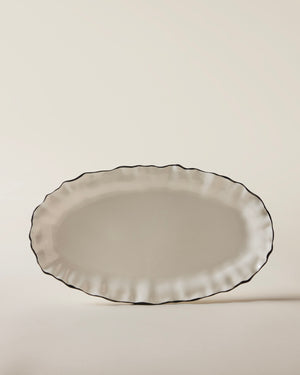IMPRESSIONISM 101


 Auguste Renoir's Bal du Moulin de la Galette Courtesy of Musée d'Orsay
Auguste Renoir's Bal du Moulin de la Galette Courtesy of Musée d'Orsay
HISTORY:
The French term "Impressionism" was first used by critics to describe a painting by Monet titled "Impression, Sunrise." However, the artists themselves embraced the term and formed a group known as the Société Anonyme des Artistes, Peintres, Sculpteurs, Graveurs (Anonymous Society of Painters, Sculptors, Engravers) to exhibit their work independently of the official Salon exhibitions. The adoption of the method and term encouraged artists all over Europe to embrace colors and the simplicity that is every day life.

Van Gogh's Starry Night, Courtesy of MoMA
“I must have flowers, always, and always. Color is my daylong obsession, joy, and torment.”
- Claude Monet

|
Emerge Lauren Skunta |
Vintage Glass Candle Holder Set Vintage |
CHARACTERSITICS:
- Emphasis on capturing the effects light and color have in a scene
- Use of quick and visible brushstrokes to create texture and movement
- Depiction on everyday scenes and subjects, such as landscapes, city streets, and leisure activities
- Emphasis on the artist's personal perception and interpretation of a scene
- Produce an unrefined & unfinished look in paintings

George Seurat's A Sunday on La Grand Jatte, Courtesy of the Art institute of Chicago
|
"Torso" by Alexander Zadorin Vintage |
Boscage Lauren Skunta |


|
Bedroom Shadow Robert Farber |
Vintage Sterling Silver Candelabra Vintage |
ARTISTS TO KNOW:
- Claude Monet
- Pierre Auguste Renoir
- Edgar Degas
- Camille Pissarro
- Mary Cassat
- George Seurat
- Berthe Morisot
- Auguste Rodin
- Paul Gauguin
- Édouard Manet
- Paul Cezanne


“To my mind, a picture should be something pleasant, cheerful, and pretty, yes pretty! There are too many unpleasant things in life as it is without creating still more of them.”
— Pierre-Auguste Renoir


Mary Cassatt's Young Mother Sewing, Courtesy of The Metropolitan Museum of Art
|
Supermodel II Isabelle Van Zeijl |
Marilyn Glass Set Vintage |

SHOP WALL ART
















